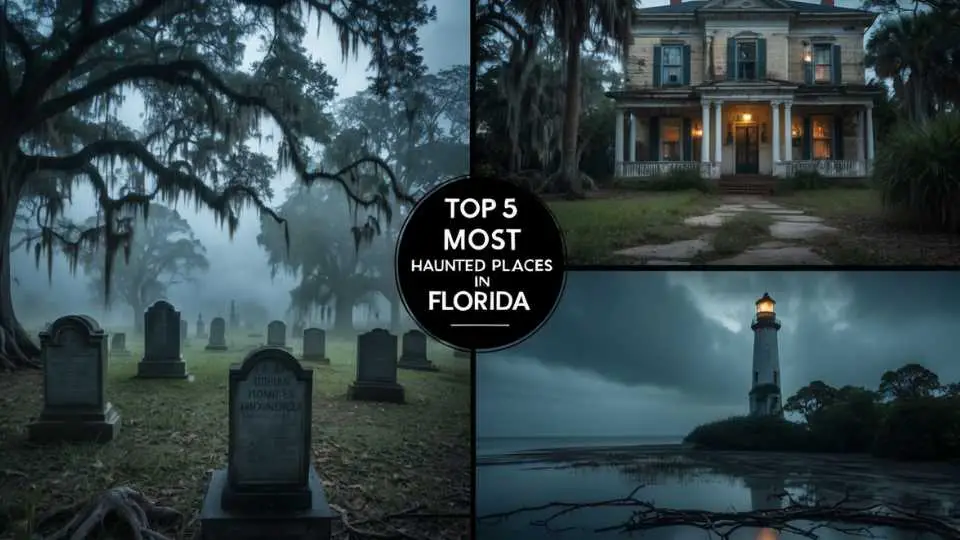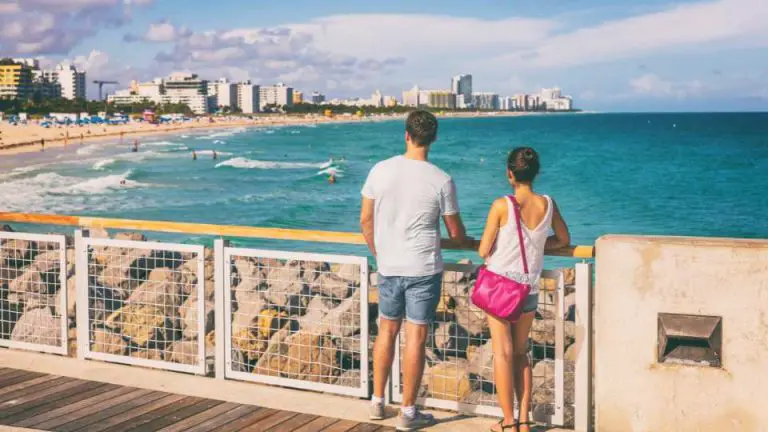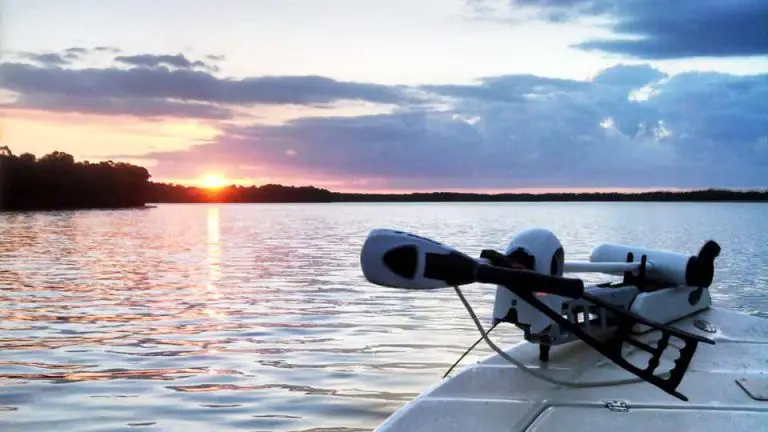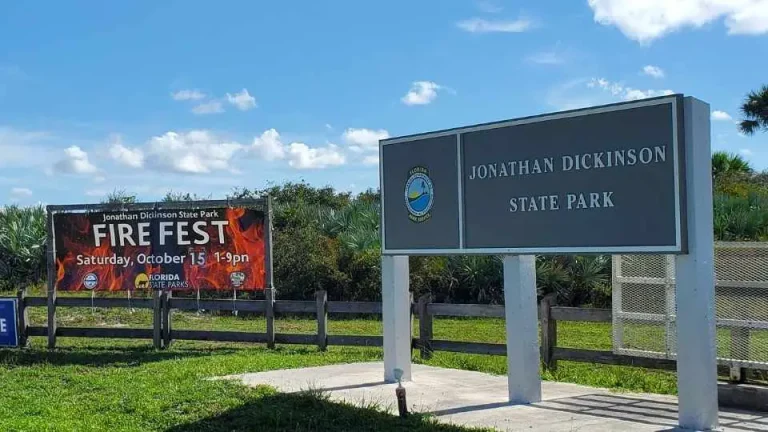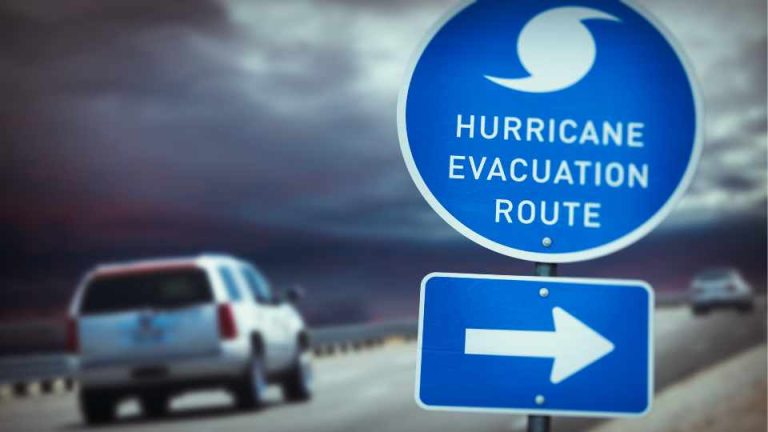Top 5 Most Haunted Places In Florida | Spine-Chilling Encounters
Florida’s history stretches far beyond beaches and theme parks. Beneath the sunshine and palm trees lies a past filled with old forts, historic hotels, and quiet cemeteries that hold more than memories. This article explores five of Florida’s most haunted places, where history and the unexplained meet in surprising ways.
Each location carries its own story—some rooted in centuries-old events, others in more recent mysteries. From coastal lighthouses to grand hotels, these sites reveal how deeply the state’s past still echoes in the present.
1) St. Augustine Lighthouse
The St. Augustine Lighthouse in Florida stands on Anastasia Island and dates back to the 19th century. It remains an active aid to navigation and a preserved historic landmark. Its long history and tragic events have made it one of the state’s most frequently mentioned haunted sites.
Visitors and staff have reported unexplained footsteps, voices, and shadowy figures inside the tower. Some accounts link these experiences to former lighthouse keepers or workers who lost their lives during construction.
The site has appeared on several paranormal investigation programs and is often featured in ghost tours of St. Augustine. The combination of documented history, personal reports, and continued public interest keeps the lighthouse central to Florida’s haunted reputation.
2) The Don CeSar Hotel, St. Pete Beach
The Don CeSar Hotel, often called “The Pink Palace,” opened in 1928 on St. Pete Beach. Its striking pink façade and Mediterranean Revival design made it a landmark along Florida’s Gulf Coast. The hotel originally attracted wealthy travelers and celebrities seeking luxury by the sea.
Reports of hauntings began after the hotel reopened in the 1970s following a period of closure. Guests and staff have described seeing a man in a white suit and Panama hat, believed to resemble founder Thomas Rowe. Witnesses often note that the figure appears calm and vanishes without a trace.
Legends connect the sightings to Rowe’s romantic past. According to local stories, he built the hotel in memory of a lost love, and his spirit may still linger in the halls. Some visitors claim to feel an unexplained presence or hear faint footsteps near the upper floors.
Despite these accounts, the Don CeSar remains a functioning luxury resort. Its reputation as both a historic landmark and a site of alleged paranormal activity continues to draw curiosity from guests interested in Florida’s haunted heritage.
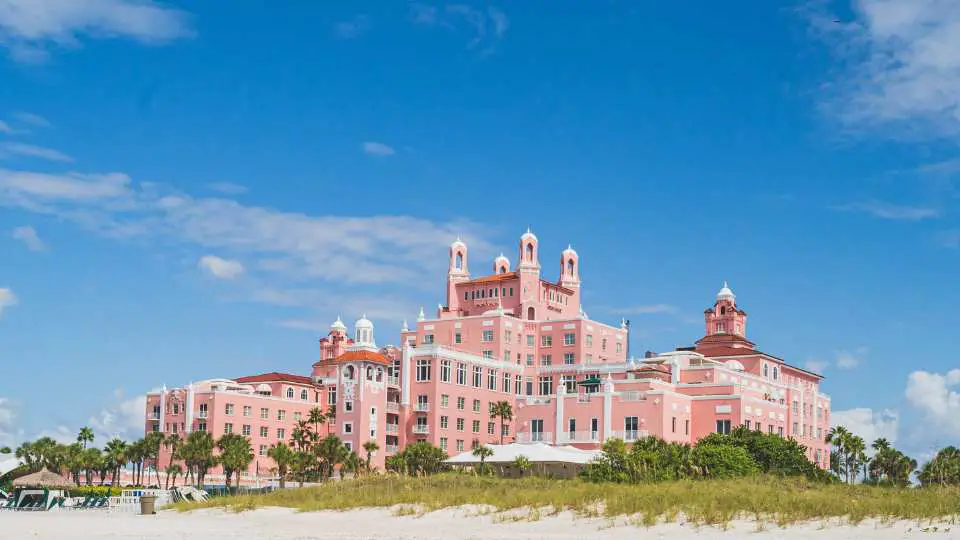
3) Key West Cemetery
Key West Cemetery, established in 1847, sits in the heart of Old Town Key West. It was relocated from its original coastal site after a hurricane destroyed the first burial ground. The cemetery now holds tens of thousands of graves, reflecting the island’s long and layered history.
Visitors often note its unusual atmosphere. Narrow paths wind through above-ground tombs, old headstones, and family plots that date back to the 19th century. Many of the graves feature distinctive inscriptions that reveal the humor and resilience of past residents.
Reports of ghostly sightings have persisted for decades. Some locals claim to see shadowy figures near older sections, while others describe sudden temperature drops or faint whispers at dusk. Paranormal enthusiasts consider it one of the most active sites in Key West.
The cemetery’s mix of cultural influences, tropical setting, and historical significance make it a compelling place to explore. Whether visitors come for its architecture, history, or rumored hauntings, it offers a quiet yet eerie glimpse into the island’s past.
4) The Biltmore Hotel, Coral Gables
The Biltmore Hotel in Coral Gables, Florida, opened in 1926 as a luxury destination for the wealthy. Designed by Schultze and Weaver, it became known for its Mediterranean Revival architecture and grand social events during the 1920s and 1930s.
During World War II, the U.S. government converted the hotel into a military hospital. The building later served as a Veterans Administration facility and a university campus before reopening as a hotel in the 1980s.
Many visitors and staff have reported unexplained sounds, flickering lights, and sightings of figures in empty corridors. These accounts have contributed to its reputation as one of Florida’s most haunted hotels.
One of the most frequently mentioned stories involves the spirit of a mobster allegedly killed at the hotel during its early years. Guests claim to hear footsteps or voices near the area where he was shot.
Today, the Biltmore continues to operate as a luxury hotel while preserving its historical character. Its blend of architectural beauty, layered history, and recurring ghost stories keeps it a notable landmark in Florida’s haunted lore.
5) Castillo de San Marcos
Castillo de San Marcos stands along the waterfront of St. Augustine, Florida. Built by the Spanish in 1672, the coquina stone fort has witnessed centuries of conflict, occupation, and change. Its long history contributes to its reputation as one of the most storied and reportedly haunted sites in the state.
Visitors often report unexplained sounds, cold spots, and faint voices echoing through the stone corridors. Some accounts describe ghostly figures dressed as soldiers from the colonial era. These reports have made the fort a frequent stop on local ghost tours.
One of the most persistent legends involves a woman named Dolores, said to be connected to a tragic love story involving a Spanish officer. While no historical record confirms the tale, it remains part of local folklore.
Today, the site operates under the National Park Service as a preserved monument. Tourists visit for both its military history and the chance to experience its rumored supernatural side.
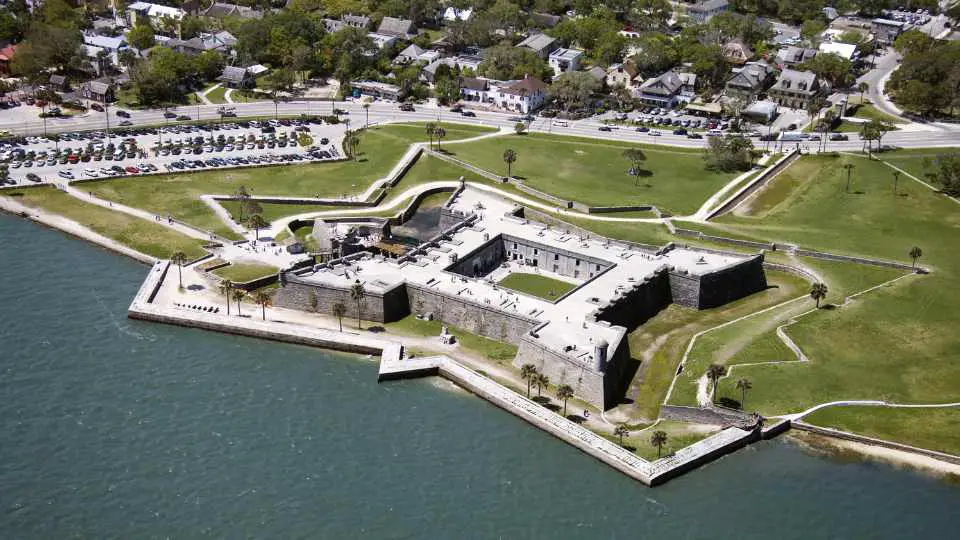
Why Florida Is a Hotspot for Haunted Locations
Florida’s mix of subtropical landscapes, centuries-old settlements, and frequent natural upheavals has created a setting rich in ghost stories. Its environment and history combine to produce conditions where legends of lingering spirits thrive.
Geography and Climate Factors
Florida’s geography plays a central role in its reputation for hauntings. The state’s wetlands, barrier islands, and dense forests often isolate old buildings and towns, preserving them long after they’ve been abandoned. Many of these areas remain humid and dimly lit, which can make natural sounds and lights appear unusual at night.
Frequent hurricanes and flooding have repeatedly destroyed and rebuilt communities. Such cycles leave behind ruins, cemeteries, and shipwrecks that locals associate with restless spirits. Coastal erosion also exposes old burial sites and artifacts, reinforcing beliefs in haunted shorelines.
Temperature changes and high humidity can cause wood and metal to expand and contract, producing unexplained creaks or echoes in historic structures. Investigators often note how these environmental factors can mimic or amplify supposed paranormal activity.
Impact of Historic Events
Florida’s long and complex history contributes to many of its haunting accounts. Spanish colonization, Civil War battles, and centuries of maritime trade brought conflict, disease, and tragedy to the region. Many of the state’s oldest cities, such as St. Augustine and Key West, still contain preserved forts, hospitals, and inns tied to these events.
Native American displacement and early colonial struggles left behind sites marked by violence and loss. These areas often feature in local folklore as places of spiritual unrest.
Historic hotels, theaters, and lighthouses—some dating back to the 1800s—remain active landmarks where visitors report unexplained sounds or sightings. Their continued use keeps these stories alive, blending Florida’s living culture with its layered past.
History of Paranormal Activity in Florida
Florida’s long and complex history has created a foundation for countless ghost stories and unexplained events. The combination of indigenous legends, colonial conflicts, and cultural blending has produced a unique landscape of paranormal traditions that persist across the state.
Early Legends and Folklore
Before European settlement, Indigenous peoples such as the Seminole and Timucua told stories of spirits tied to the land and water. Many early accounts describe sacred burial grounds and guardian spirits believed to inhabit springs and forests.
Spanish colonists arriving in the 16th century brought their own beliefs about restless souls and divine punishment. These ideas merged with Native traditions, giving rise to tales of haunted missions and cursed battlefields.
By the 1800s, Florida’s frontier towns and coastal forts became settings for ghost stories linked to disease outbreaks, shipwrecks, and violent encounters. The St. Augustine area, one of the oldest European settlements in the United States, remains a focal point for reports of spectral soldiers and colonial-era apparitions.
Common early themes included:
- Restless spirits near burial sites
- Apparitions of lost explorers
- Ghost lights over swamps and marshes
These stories formed the backbone of Florida’s early supernatural folklore, blending observation, fear, and oral tradition.
Influence of Florida’s Diverse Cultures
Florida’s cultural diversity has shaped its paranormal identity. Spanish, British, African, and Caribbean influences introduced new spiritual practices and ghost beliefs that intertwined with local folklore.
In Key West and Miami, Afro-Caribbean traditions such as Santería and Vodou contributed rituals and ideas about ancestral spirits. These practices influenced how residents interpreted unexplained phenomena, often viewing them as messages or warnings rather than hauntings.
Immigrant communities from Cuba, the Bahamas, and Haiti added further layers of belief, connecting the supernatural to family heritage and moral lessons. Meanwhile, European settlers continued to tell stories of haunted plantations and lighthouses, linking tragedy to lingering presences.
This cultural blending created a distinctive Floridian perspective on the paranormal—one that treats ghost stories not only as entertainment but also as reflections of history, faith, and identity.
